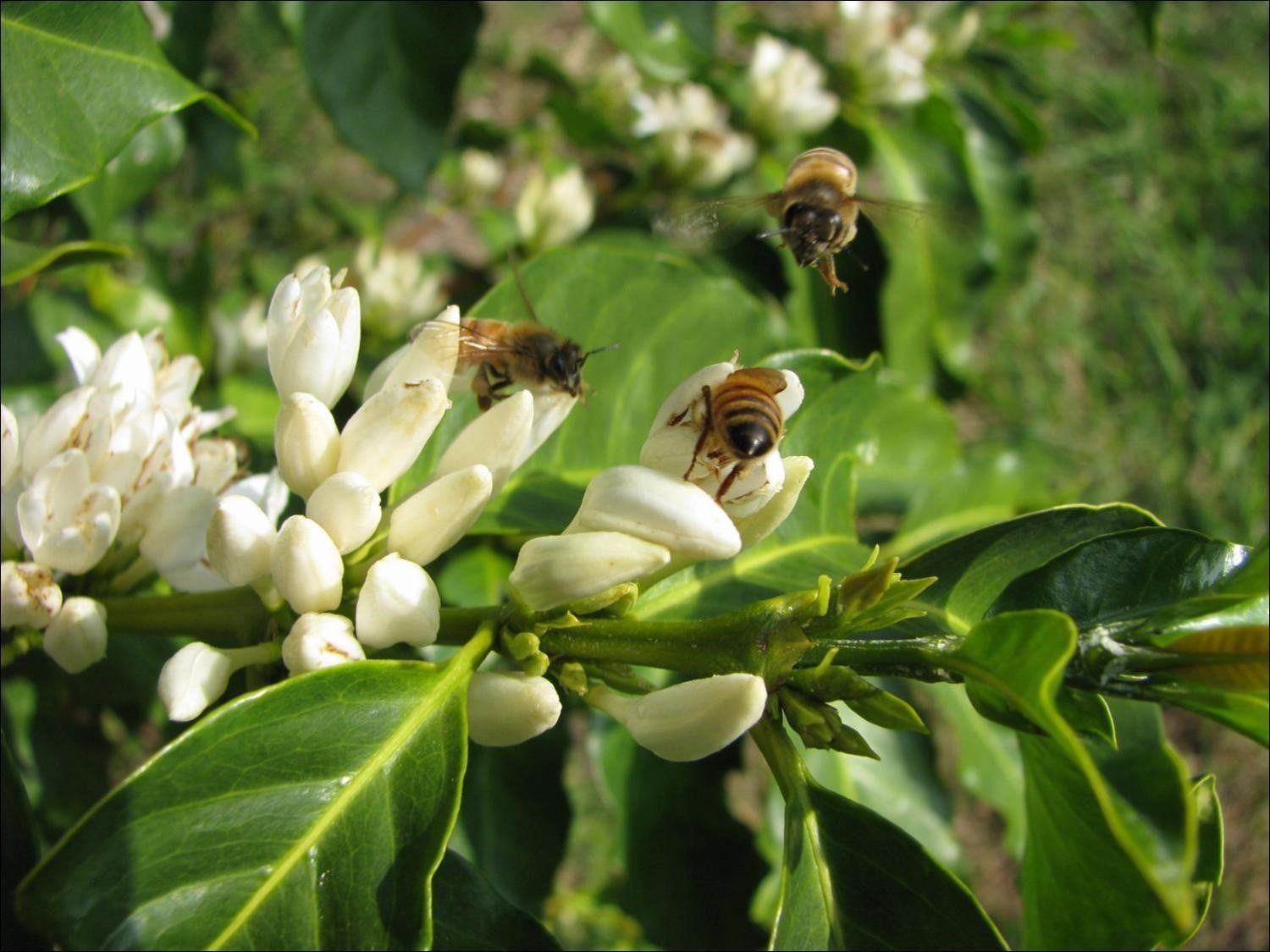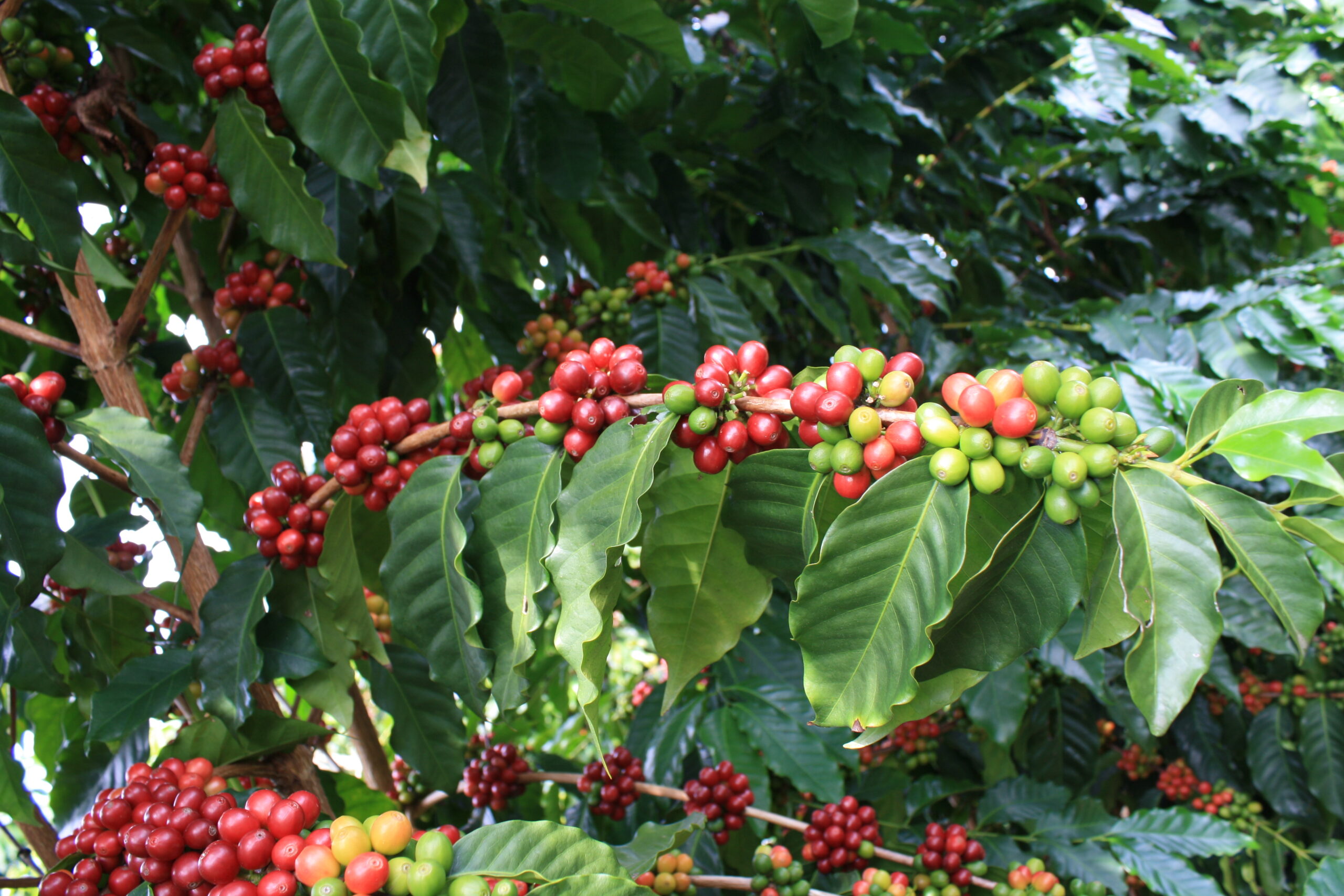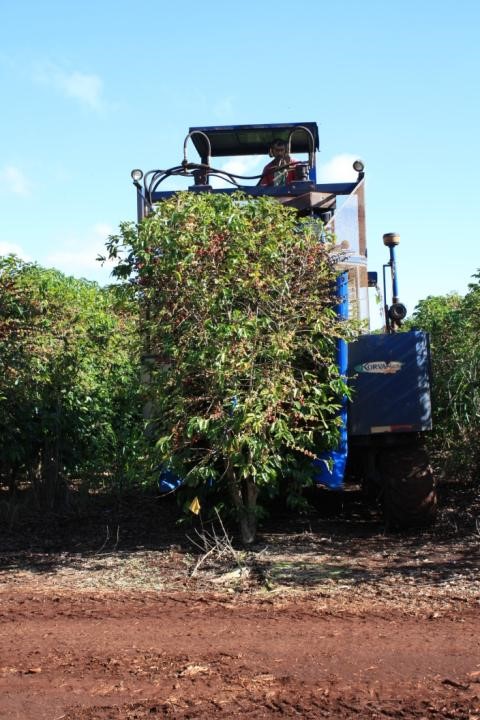Coffee (Coffea spp), is an evergreen shrub in the family Rubiaceae that produces berries. Ripe berries are pulped to expose the seeds which are fermented, dried, hulled and roasted to produce the coffee beverage. The two most widely grown coffee species are Coffea canephora var. robusta and Coffea arabica. The specialty coffee market is largely based on the Arabica coffee. Worldwide coffee is produced in about 80 countries and supports the livelihood of over 125 million people in Latin America, Africa, and Asia. In the United States, Coffee is produced commercially in Hawaii by over 1,470 growers, in Puerto Rico by 2,300 growers, and is growing in production in California. Coffee production ranges from small family-owned hand-picked coffee farms to large mechanically harvested coffee plantations.
Pests and diseases are major factors that affect coffee production including Coffee Leaf Rust (Hemileia vastatrix) and Coffee Berry Borer (Hypothenemus hampei). The USDA Coffee Breeding Program is housed within the Tropical Plant Genetic Resources and Disease Research Unit in Hilo, HI. Together with the Hawaii Agricultural Research Center and World Coffee Research, our main goal is to develop improved coffee cultivars with disease, pest and abiotic stress resistances with high cup quality for the specialty coffee market. This program contains diverse repository collection, breeding and tissue culture nurseries, cultivar evaluation trials, and genetic mapping trials.







